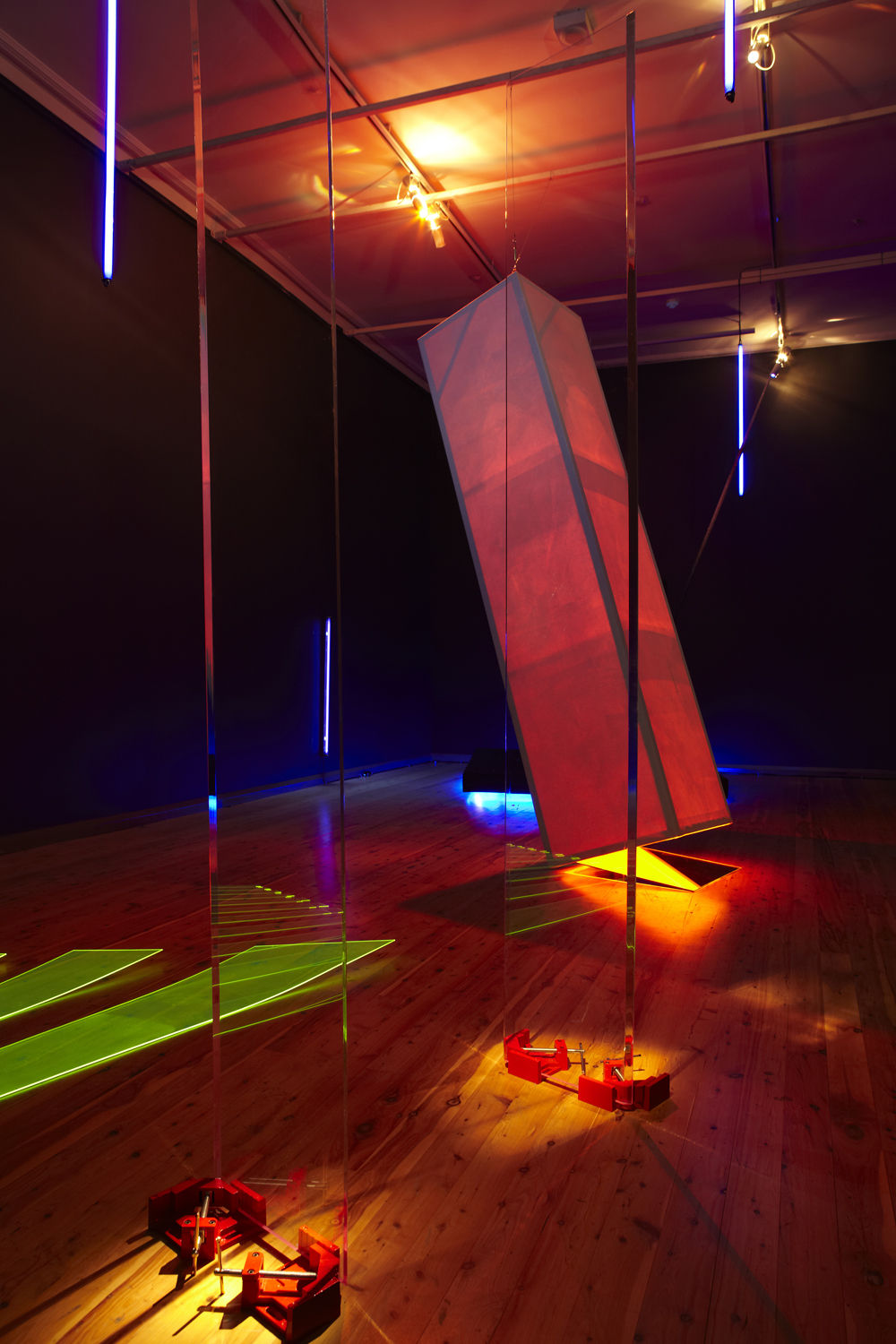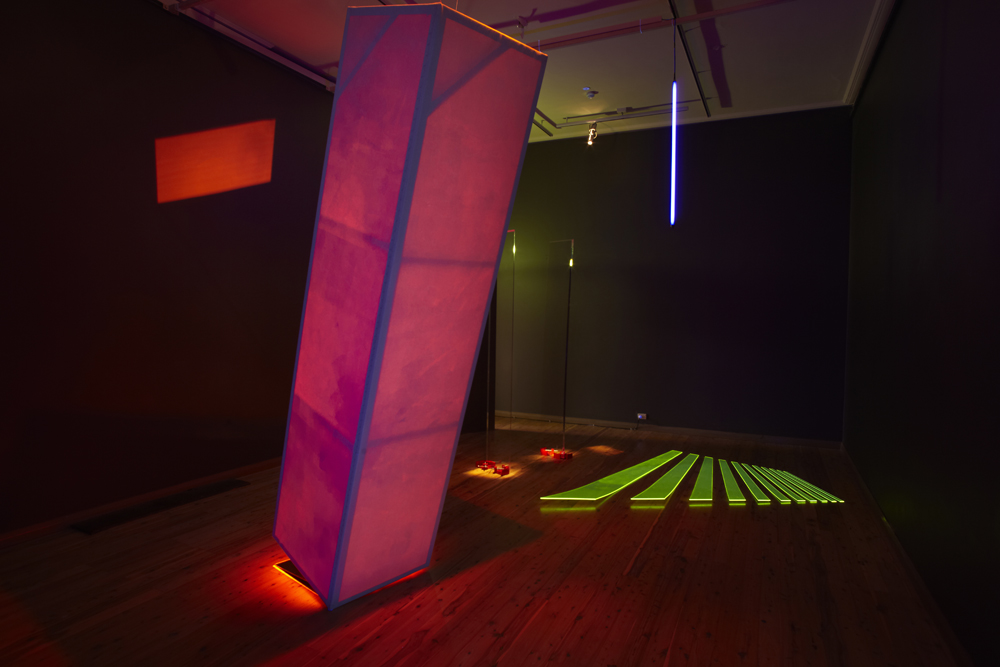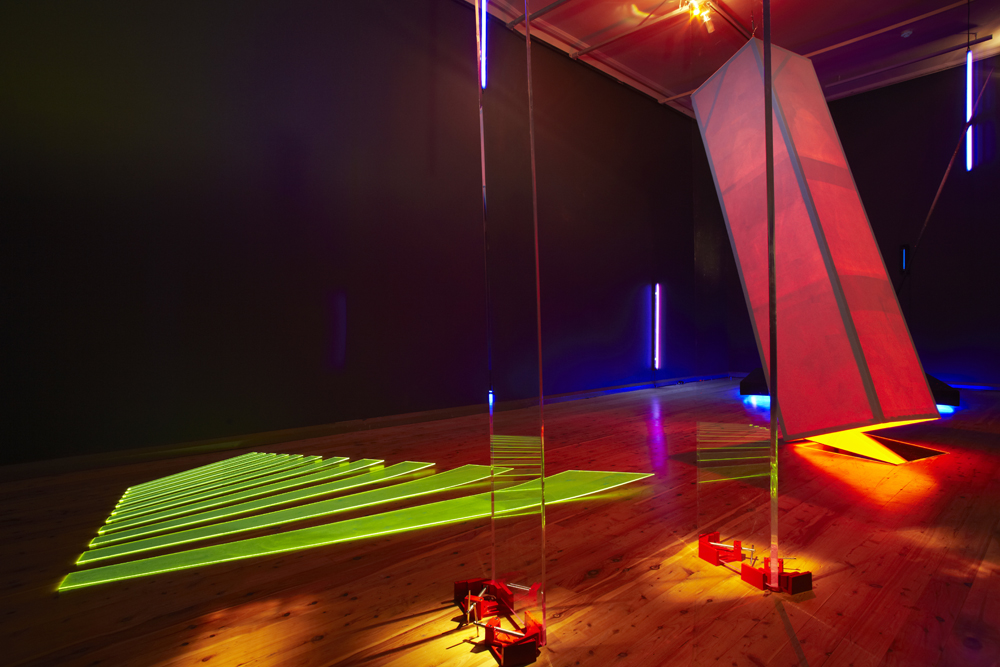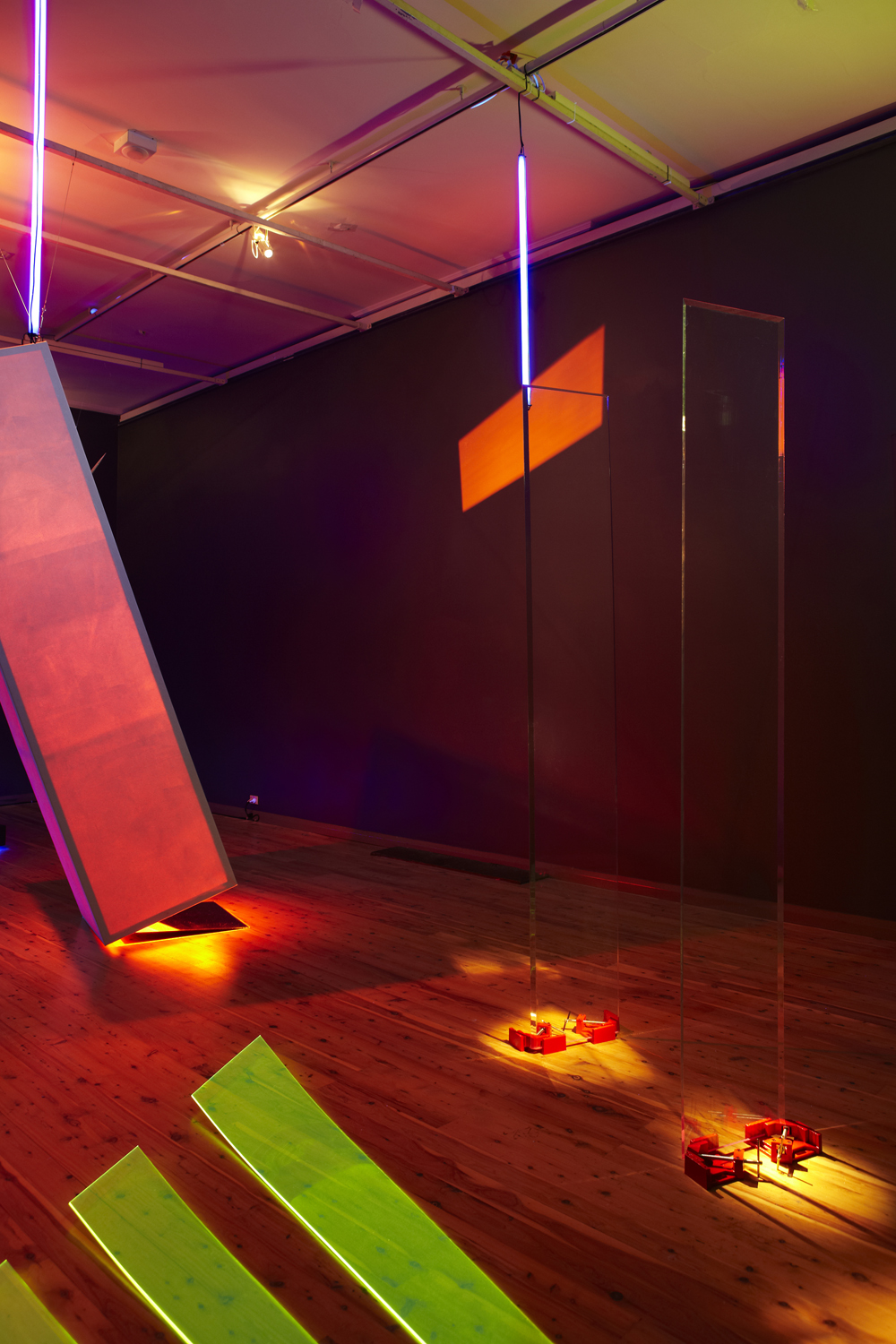





GLOW
Sydney College of the Arts Graduate School Gallery
11 - 26 April, 2013
GLOW explores the space of painting and how painting functions in space. An exhibition that works with the expanded field of painting, GLOW experiments with the conceptual ideas and frameworks of painting, refusing its definitions, restrictions or limits, and extended what Rosalind E Krauss refers to as the ‘post-medium condition’ by undermining its material basis.
GLOW brings together the work of three research candidates in the SCA Graduate School- Jonny Niesche (MFA), Hayley Megan French (PhD) and Carla Liesch (MFA)- who, through collaboration, activate the space surrounding their work as if the work acts as a portal to other universes. Their ‘painting’ explores the conceptual and cosmological possibilities of space implied by the very glow or aura outside the work itself, limited only by the actual architectural space of the gallery, but reaching out to the glittering night sky.
In space, no one can hear you paint.
Light Painting, 2013
Using conventional methods of paint on a canvas stretcher, Light Painting considers possible methods for approaching painting today. This is the critical discussion framing the exhibition GLOW; what is the potential of space in this expanded field of painting? Douglas Fogle’s question – Where does the edge of the canvas end and the edge of the world begin?[1] is at the core of this exhibition. This question is approached through different conceptions of space in painting, the cosmological, the architectural and the imagined.
The ‘expanded field of painting’ references Rosalind Krauss’s essay ‘Sculpture in the expanded field’ in 1979. Krauss identified that “rather surprising things have come to be called sculpture.” A paradigm shift was taking place and “categories like sculpture and painting have been kneaded and stretched and twisted in an extraordinary demonstration of elasticity.” At the conclusion of her essay, Krauss suggested the shift taking place in painting was best understood in terms of “uniqueness and reproducibility.”[2] In 2006, Mark Titmarsh notes that in the decade following Krauss’s essay, painting was discussed in exactly those terms. Now, he argues, ‘expanded painting’, while undefined, “functions as a field of possibilities that questions what painting is and what it can become.”[3]
Light Painting speaks to this blurring edge in contemporary painting as it operates in this expanded field. The square of light reflected on the wall references paintings’ tradition as a window on the world, now acting as the suggestion of an exit. The flow of light travels the boundaries of painting, bouncing from the three-dimensional to the two-dimensional; or as Titmarsh argues, between paintings’ ‘thingliness’ and its ‘discursiveness.’[4]
My practice is informed by the history of abstraction and the tensions it holds in play—materialist and idealist endeavours. Both are evident in this work, from the technical contemplation of composition to the transcendence of space, the allusion to an exit point. A cadmium orange monochrome glows from within, seen only through the mirror placed below the object. The relationship of this monochrome painting to its technical support draws from the minimalist consideration of the art object and its spatial context.
The two-dimensional painting typical of my practice has become a three-dimensional painting-object. This work moves the painting into the space of the viewer and then reflects back onto, almost through, the wall. It is this reflection, this shifting between different states of painting that Light Painting is ultimately concerned with. In this sense, the work has a strong relationship to the other works in the exhibition, together concerned with the spatial and conceptual issues ingrained in contemporary painting practice.
Hayley Megan French
[1] Douglas Fogle, “The Trouble with Painting,” in Painting at the Edge of the World, ed. Walker Art Centre (Minneapolis: Walker Art Centre, 2001).
[2] Rosalind Krauss, “Sculpture in the Expanded Field,” October 8, no. Spring 1979 (1979).
[3] Mark Titmarsh, “Shapes of inhabitation: Painting in the expanded field,” Art Monthly Australia 189, no. May 2006 (2006).
[4] Ibid.